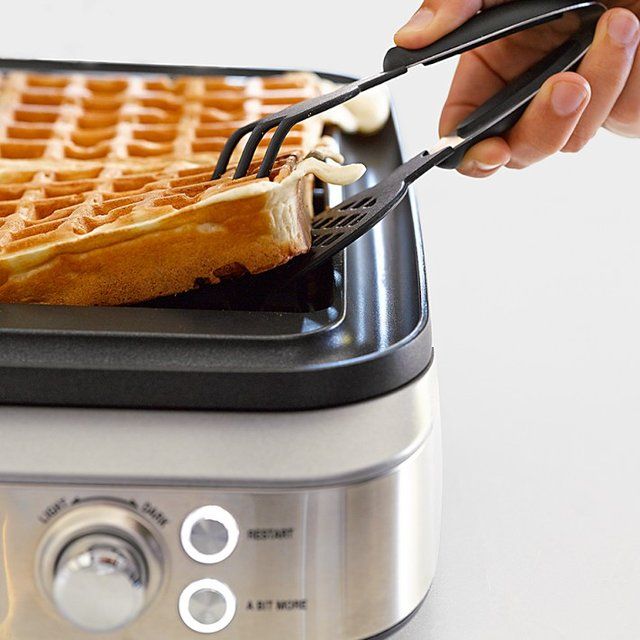Baby food production process
Top Processing Techniques for Baby Food
If you’ve tried out a range of baby food options with your little one, you may know that the quality of the product varies greatly by brand. Not all baby food is created equal!
These variations go beyond flavor combinations—they depend on how your baby’s food is prepared, packaged, and stored, which differs dramatically based on the brand’s processing technique. How a company processes its baby food ultimately affects the nutrition, safety, and flavor of the end product—so it’s definitely something you want to be aware of as you’re shopping!
Baby food brands use three main food processing techniques to create your little one’s food—retort processing, high pressure processing (HPP), and aseptic processing—each with their own diverse methods, results, and benefits.
Let’s dive into the differences between the various processing methods, and how you can select the product that’s best for your baby’s growing belly.
RetortLet’s start with perhaps the most common form of modern baby food processing: the retort processing method.
Retort processing became popular as an alternative to traditional canning methods, as it introduced flexible plastic & foil pouches (usually made of some combination of polyester, nylon, aluminum, and other plastics) as a new form of sterile packaging for a wide variety of foods—including baby food. These laminated pouches are able to withstand the high temperatures required for commercial sterilization—like their canned and jarred predecessors—but have the advantage of being lighter, more flexible, and thus easier to transport & store. Our friends at Fin vs Fin recently reviewed pouches vs Little Spoon’s method, you can check out more here.
Some baby food brands that opt for retort processing buy pre-processed purées and concentrates from suppliers to serve as the base for their products. These purées are made by chemically washing produce, and then milling, straining, and heating the resulting mixture to high temperatures before further processing and introducing preservatives like citric acid to prepare the baby food for its unrefrigerated future on the grocery store shelf.
This process produced single-flavor mixtures that are then combined together in large vats or metal drums to create the different flavor combinations you might be familiar with from the baby food aisle at your grocery store. The purées are then filled into the plastic & foil retort pouches, where they are cooked—yes, again!—inside of the final packaging. These high temperatures are a pasteurization step that renders the food commercially stable. That being said, introducing the food to such high temperatures at various points in the process doesn’t just disrupt the taste, texture and color of purées—it also kills off vital nutrition and releases chemicals from the plastic packaging into your baby’s food.
High-Pressure Processing (HPP)At Little Spoon, we do things differently, using a technique called high-pressure processing (HPP). HPP is a proven food technology used for a wide range of products like cold pressed juice and hummus, and…baby food!
Here’s how HPP works: packaged baby food blends made from whole foods, herbs, spices and superfoods are placed in a large chamber.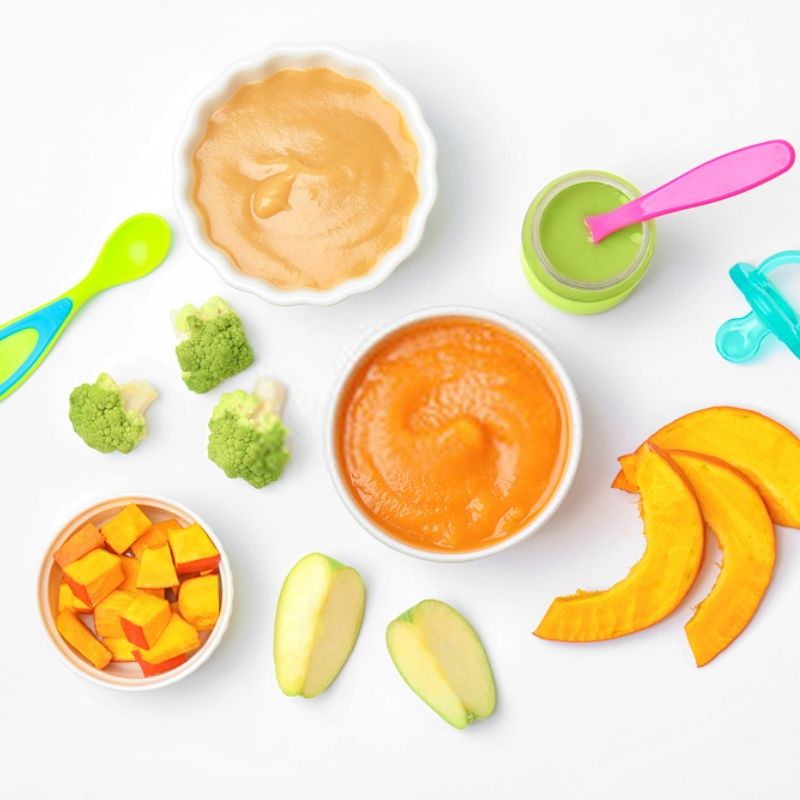 The chamber is filled with cold water and then pressurized to 87,000 psi (pounds per square inch) – that’s pressure greater than what’s found in the deepest part of the ocean! What happens at 87,000 psi? Harmful bacteria is neutralized while locking in all of the good stuff like vitamins, nutrients, color, texture, and, of course—flavor! Little Spoon uses HPP to ensure our product is delicious and safe without having to use additives, heat, or preservatives.
The chamber is filled with cold water and then pressurized to 87,000 psi (pounds per square inch) – that’s pressure greater than what’s found in the deepest part of the ocean! What happens at 87,000 psi? Harmful bacteria is neutralized while locking in all of the good stuff like vitamins, nutrients, color, texture, and, of course—flavor! Little Spoon uses HPP to ensure our product is delicious and safe without having to use additives, heat, or preservatives.
Studies have also indicated that certain foods processed via HPP may actually contain more nutrients than fresh food alone, as HPP has been shown to make certain nutrients in fresh food more easily absorbed by your baby’s body. Another win for HPP!
Processing via HPP keeps ingredient lists short (since there’s no need for preservatives or added ingredients) and extends shelf life—which means that Little Spoon can deliver less frequently (every 2 weeks vs. every week). This increases cost efficiency (good news for your wallet!), while also minimizing spoilage and reducing food waste (good news for our carbon footprint!).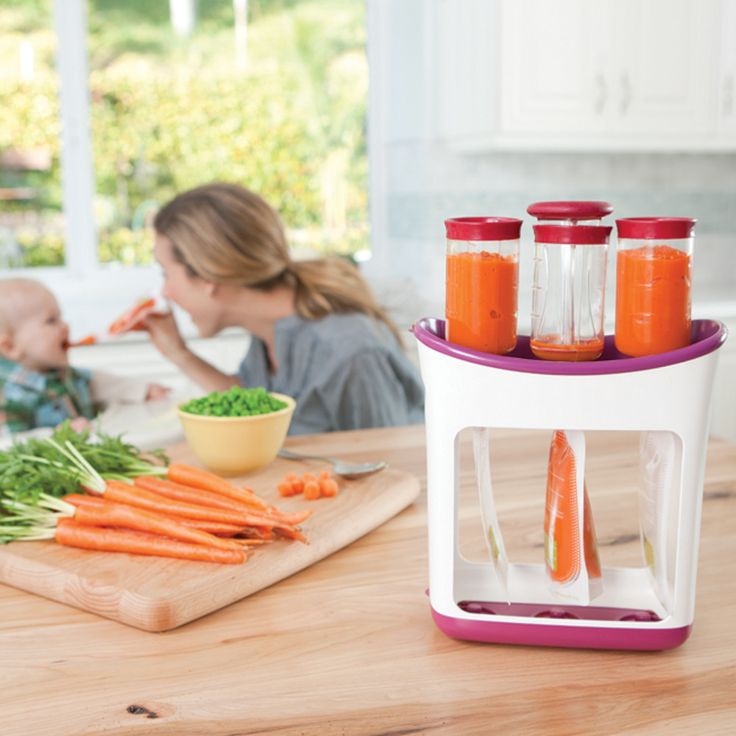
There’s one more food processing technique—aseptic processing—which falls somewhere in between HPP and retort processing methods in terms of safety, nutritional value, and shelf-stability.
Aseptic processes skip the repeated exposure to extreme heat that retort processing favors. Instead, aseptic processing uses high-temperature short-time sterilization (HTST), which allows the product to be exposed to heat for a considerably lower time than with retort processing. This preserves the food’s natural flavor and nutritional value during the sterilization process.
The main benefit of aseptic processing is that it leads to less food waste—aseptic packaging has become popular because the process can keep food safe and fresh for more than six months, without the need for refrigeration or preservatives. Unlike HPP, which is more like the food you make at home (perishable and requiring refrigeration), aseptic foods are shelf-stabilized.
At Little Spoon, we’re determined to provide the best meal solutions possible for your babe. That’s why we opt for HPP—to ensure fresh, safe baby food (just like homemade!) that’s specifically designed for your little one’s nutritional needs. Get started today with Little Spoon and rest easy knowing your babe is getting fresh, nutritional baby food.
That’s why we opt for HPP—to ensure fresh, safe baby food (just like homemade!) that’s specifically designed for your little one’s nutritional needs. Get started today with Little Spoon and rest easy knowing your babe is getting fresh, nutritional baby food.
We did the research so you don’t have to but if you’re interested in digging a little further into food processing techniques, here are our source:
Retort:
https://datatrace.mesalabs.com/2014/09/22/retort-sterilization-in-food-processing/
https://www.ptipacktech.com/Package-Type/Retort-Processing
https://www.ift.org/news-and-publications/food-technology-magazine/issues/2003/october/features/developing-foods_formulation-and-manufacturing-of-infant-and-toddler-foods
http://citeseerx.ist.psu.edu/viewdoc/download?doi=10.1.1.666.7247&rep=rep1&type=pdf
https://www.packagingdigest.com/food-packaging/how-food-processing-methods-affect-your-packaging-options-2016-07-25
HPP:
https://www. mother.ly/lifestyle/hpp-baby-food-trend
mother.ly/lifestyle/hpp-baby-food-trend
https://www.huffpost.com/entry/is-hpp-the-new-baby-food_b_10968592
https://www.packagingdigest.com/food-packaging/how-food-processing-methods-affect-your-packaging-options-2016-07-25
https://www.foodbusinessnews.net/articles/13272-high-pressure-processing-gaining-popularity-in-beverages
https://www.sciencedirect.com/science/article/pii/S1466856407000598
Aseptic:
https://www.bevsource.com/news/beverage-preservation-101-part-ii-flash-pasteurization-aseptic-filling-hpp
https://www.packagingdigest.com/food-packaging/how-food-processing-methods-affect-your-packaging-options-2016-07-25
Overall food processing techniques:
https://slate.com/human-interest/2013/09/homemade-versus-store-bought-baby-food-your-kitchen-beats-the-jars.html
Share:
Looking for more tips on parenting, nutrition & all the WTF moments of this life stage? Sign up for our weekly Is This Normal by Little Spoon newsletter.

Processing applications for baby food and infant formula
Baby food production is a rapidly developing category worldwide, characterised by strong, science-driven innovations for added value and care for babies beyond simply nutrition. Product diversification to focus on health and fitness, organic, ethical and sustainable products, as well as fortification with functional ingredients to support immune systems, aid sleep and reduce risk of allergies, for example, are major trends that places high demands on your production and product innovation. Consumers also prioritise quality and safety over price, demanding a strong, safe brand image and good health credentials.
Based on our specialised food production and technology expertise, our competitive and guaranteed solutions meet your needs and enable you to meet growing demands from retailers and consumers. Our optimal solutions unleash your product innovation and enable you to produce a wide range of baby foods – from infant formula and ready-to-drink products to fruit purées and purées with particles. And we enable your flexibility in packaging and distribution options for chilled to ambient distribution.
And we enable your flexibility in packaging and distribution options for chilled to ambient distribution.
Growing trends in baby food production
- Safe, high quality and wholesome baby food purées and infant formula
- Higher nutritional value and fresh taste and colour
- A greater variety of products – from smooth fruit purées to purées with beef and potatoes and products with functional ingredients
- Products that prioritize low environmental impact
Product examples: powders, fruit- and vegetable-based purées, porridge and ready-to-drink products.
Best-practice lines for baby food and infant formula
Continuous line
This line handles the production of smooth to small particulate purées. It allows you to produce a broad range of products – from smooth fruit purées to purées with spaghetti pieces – that are wholesome and have higher nutritional value and fresh taste and colour. The recipe-specific shear rate in mixing and optimized heat treatment achieves desired product characteristics with high production efficiency. Our line enables safe production with exceptional quality, efficiency and flexibility.
Our line enables safe production with exceptional quality, efficiency and flexibility.
Continuous particulate line
This line handles particles up to Ø25 mm with excellent particle integrity. It allows you to produce a greater variety of products – from smooth fruit purées to purées with beef and potatoes – that are wholesome and have higher nutritional value and fresh taste and colour. Gentle processing prevents the breakdown of particle shape and maintains even distribution. The recipe specific shear rate in mixing and temperature program achieves the desired product characteristics. Our line enables safe production solutions with exceptional versatility, quality and efficiency.
Continuous ready-to-drink line
This line enables the production of liquid ready-to-drink infant formula. It meets demands for safe, convenient infant formula with higher nutritional value and fresh taste and colour. It ensures accurate and consistent raw ingredient dosing. And it minimizes heat load for maximized nutritional value with secure bacterial reduction. Our line enables uncompromised food safety, high quality and production efficiency.
And it minimizes heat load for maximized nutritional value with secure bacterial reduction. Our line enables uncompromised food safety, high quality and production efficiency.
Continuous infant formula line - powder to powder
This line enables the production of powdered infant formula, from recombined milk and powder ingredients. It allows you to produce with high dry matter milk recombination for maximum production efficiency. It ensures accurate and consistent raw ingredient dosing. And it minimizes heat load for maximized nutritional value with the highest bacterial reduction before drying. It achieves desired powder properties at the targeted moisture level. Our line enables uncompromised food safety and maximized quality and efficiency.
Technological solutions for the production of baby food and infant formula
The baby food industry is a dynamically developing industry characterized by the use of knowledge-intensive innovations that provide not just food for babies, but additional benefits for their upbringing and development. Diversification of products aimed at improving the health and fitness of babies, the use of organic, patented and environmentally friendly products, as well as fortification with natural ingredients to support the immune system, normalize sleep and reduce the risk of allergies are the main development trends that lead to high requirements for baby food production and product innovations in this area. Consumers care more about product safety and quality than price, so buyers pay attention to brand authority and ingredients.
Diversification of products aimed at improving the health and fitness of babies, the use of organic, patented and environmentally friendly products, as well as fortification with natural ingredients to support the immune system, normalize sleep and reduce the risk of allergies are the main development trends that lead to high requirements for baby food production and product innovations in this area. Consumers care more about product safety and quality than price, so buyers pay attention to brand authority and ingredients.
Our competitive and guaranteed solutions, based on expertise in food production and technology, meet all requirements and allow you to produce products that meet the ever-growing needs of retailers and end consumers. Our best solutions allow you to launch novelties and a variety of baby food, from infant formula and ready-to-drink drinks to fruit puree and puree with chunks. We offer you a wide range of packaging options for both pasteurized and aseptic products.
Current trends in baby food production
- Safe, high quality and healthy baby purees and formulas
- High nutritional value, fresh taste and natural color
- Wide range of products from smooth fruit purees to purees with beef and potatoes and products with special ingredients
- Products with minimal environmental impact
Product examples: Powders, fruit and vegetable purees, cereals and ready-to-drink drinks.
The best baby food and formula lines
Continuous Production Line
This line is suitable for the production of both smooth puree and chunky puree. The line allows the production of a wide variety of products, from smooth fruit purees to purees with pasta pieces, with high nutritional value, fresh taste and natural color. By varying (depending on the recipe) shear rate during the mixing process, and by optimizing the heat treatment process, the desired product characteristics are achieved and high production efficiency is ensured. Our line guarantees production safety, unsurpassed quality, operational flexibility and efficiency.
Our line guarantees production safety, unsurpassed quality, operational flexibility and efficiency.
Continuous Food Chunk Line This line provides excellent integrity for particles up to 25mm in diameter. This line allows you to produce a wide variety of products: from smooth fruit purees to purees with beef and potatoes, which are distinguished by their beneficial properties and have increased nutritional value, fresh and natural color and taste. The gentle handling prevents damage to the shape of the pieces and ensures their even distribution. Thanks to the variable (depending on the recipe) shear rate during the mixing process, as well as the heat treatment program, the required product characteristics are achieved. Our line guarantees safe production solutions, unsurpassed quality, operational flexibility and high efficiency.
Continuous production line for ready-to-drink beverages
This line provides the production of ready-to-drink liquid infant formula. It provides safe and convenient infant formula with enhanced nutritional value, fresh and natural color and taste. In addition, the line ensures accurate and uninterrupted dosing of raw materials. It also minimizes the heat load to enhance the nutritional value of the product and kill bacteria. Our line guarantees food safety, unrivaled quality, flexibility and high efficiency.
It provides safe and convenient infant formula with enhanced nutritional value, fresh and natural color and taste. In addition, the line ensures accurate and uninterrupted dosing of raw materials. It also minimizes the heat load to enhance the nutritional value of the product and kill bacteria. Our line guarantees food safety, unrivaled quality, flexibility and high efficiency.
Powdered Infant Formula Continuous Production Line
This line allows the production of powdered infant formula from recombined milk and powdered ingredients. The line is designed for production with recombination of dry matter in milk to achieve maximum production efficiency. In addition, the line ensures accurate and uninterrupted dosing of raw materials. It also minimizes the heat load to enhance the nutritional value of the product and maximize bacteria killing before drying. In this way, the desired properties of the powder and the required moisture level are achieved. Our line guarantees food safety, unsurpassed quality and high efficiency.
Our line guarantees food safety, unsurpassed quality and high efficiency.
Features of the production of canned food for baby food
Category: Baby food products
Technological operations for the production of canned baby food have similarities and differences, which allows them to be combined into general and specific operations.
K general includes operations of the preparatory cycle associated with acceptance raw materials in terms of quantity and quality, inspection, preliminary preparation it for processing, etc.
At production of canned food on a fruit and berry and vegetable basis fruit and vegetable raw materials subjected to sorting, which allows the formation of homogeneous the quality of a batch of products by rejecting defective products by division into quality grades. Sorting includes inspection (visual inspection) of a batch of raw materials, removal of non-standard specimens - unripe, with signs of microbial spoilage, with a damaged surface, etc. d.
d.
Calibration is not carried out, as it is cooked in mainly juices and purees, with product size having a significant impact on the quality of the finished product does not render.
Cleaning raw material is to release from parts that are inedible or of little nutritional value - skins, seeds, seeds, stalks, seed chambers, etc., thereby increasing the number edible part. Apply chemical, steam-thermal, pneumatic, refrigeration and mechanical cleaning methods.
Chemical method remove the skin of the fruit and vegetables, for which raw materials are processed in a hot (80-90 ° C) solution of caustic soda. In this case, there is a weakening of the connection between the skin and adjacent parenchymal tissues, the skin is easily removed. Potatoes and root vegetables are treated with a steam-thermal method , which consists in processing raw materials with live steam under pressure. Moisture under the skin boils, as it were, due to which the skin is torn and partially separated.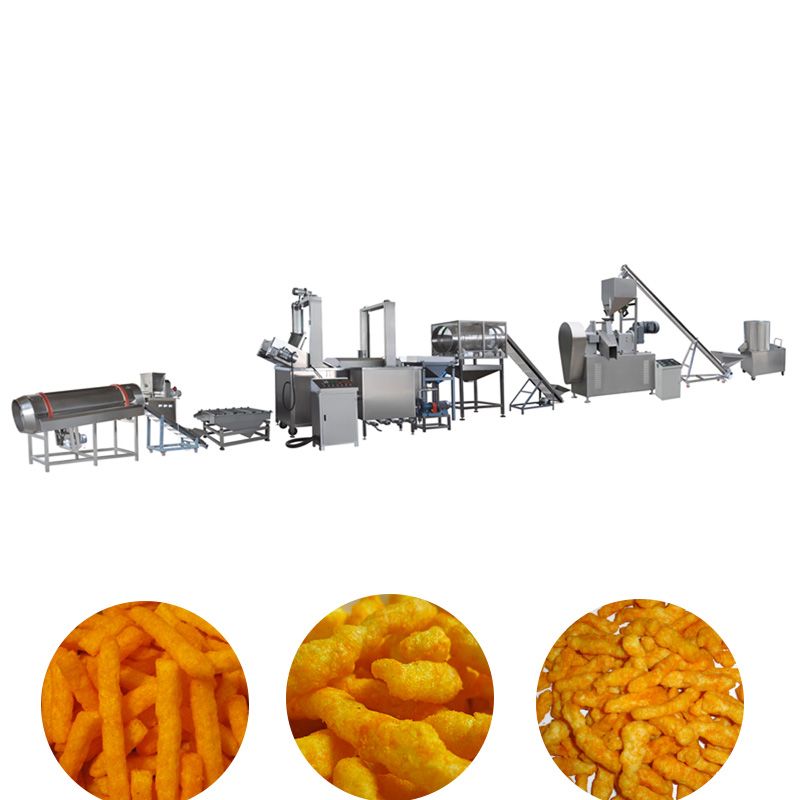 Finally, the skin separates into washing machine. At the same time, partial losses of vitamins are observed, mainly due to account of the peel, rich in these substances. At the same time, enzymes are inactivated and biochemical processes leading to the loss of nutrients are stopped.
Finally, the skin separates into washing machine. At the same time, partial losses of vitamins are observed, mainly due to account of the peel, rich in these substances. At the same time, enzymes are inactivated and biochemical processes leading to the loss of nutrients are stopped.
Root vegetables and potatoes are also cleaned mechanically on root peelers with abrasive surface. This method is the least economical due to the increased amount of waste, but does not affect the composition of raw materials.
Refrigeration cleaning method based on instantaneous abrupt freezing of the skin and subcutaneous layer of the fruit with a refrigerant and subsequent removal of exfoliated skin in a brush washer. At the same time good vitamins are preserved, but expensive equipment is required. Therefore, this method is rarely used.
Pneumatic method is used when peeling onions compressed air flow. Scales are removed using conical rotating rollers, upper and lower knives installed in the machine cut off the neck and lower part of the bulb.
Wash Raw materials are being held to remove contaminants, pesticides, impurities and microorganisms in washing machines with subsequent control by the degree of microorganism contamination of pure raw materials. The contamination should not exceed the maximum allowable level for vegetables 5 * 104, for apples - 1 * 103 in 1 g of raw materials.
For heavily contaminated vegetable raw materials (carrots, beets) carry out a preliminary washing in hydraulic conveyors using brushes, vibrating vibrations, ultrasound and water turbulence. The water consumption for the sink must be 1 m 3 per 1 ton of raw materials.
New the method of washing with carbon dioxide gas is based on that carbon dioxide is bubbled into the water in the wash tub. At the same time, it happens partial acidification of water and its turbulence. As a result of the resulting effect flotation contaminants are completely removed. This washing method was developed in VNIIKOP.
At the production of canned meat and meat-vegetable products is then carried out mechanical processing of raw materials, which includes cutting, grinding (crushing), wiping, pressing, filtering, homogenizing, deaeration.
At production of canned meat products general operations preparatory cycle are external inspection, toilet, boning, trimming, sorting. Frozen meat is thawed in the air. This removes all parts that are inedible and of little nutritional value - bones, cartilage, connective tissues. Bird carcasses are inspected, the remaining stumps are removed, coccygeal gland, internal organs, as well as veterinary marks. Then them wash from the outside and inside, first with warm, then cold water. The giblets are inspected, cleaned of the contents, washed also at first warm, then cold water. Next, the prepared raw materials are sent to a mechanical processing.
Preparation auxiliary raw material consists of the following: the butter is cleaned from staff; salt is sieved; bow and root crops are cleaned and washed; starch and casecite are sifted and mixed with meat broth. The casecit emulsion is prepared immediately before use. Long-term storage is not allowed. Spice extracts (celery, parsley, dill) is mixed with prepared salt in proportions according to the recipe.
The casecit emulsion is prepared immediately before use. Long-term storage is not allowed. Spice extracts (celery, parsley, dill) is mixed with prepared salt in proportions according to the recipe.
Preparation fish enable defrost frozen fish, sorting by size and quality, washing, removing inedible and parts of low nutritional value (scales, skin, fins, viscera), cutting into pieces weighing 80-100 g. Simultaneously prepare auxiliary materials and basic vegetable raw materials. These operations are carried out in the same way as in the production of canned meat with vegetables.
Mixing components are used when production of combined canned meat and fish — with vegetables, cereals and etc. In the production of canned food for fish base stirring components are carried out according to the recipe. First load minced fish and carrots, then add oatmeal, oatmeal, starch and milk powder until obtaining a homogeneous mass. After that, butter, salt and water are introduced or pasteurized milk and mix again. The resulting mass is transferred to deaeration and heating.
The resulting mass is transferred to deaeration and heating.
Except In addition, common to all canned food are blanching, homogenization, deaeration, packaging, corking, sterilization. However, they are expedient be considered in a certain technological sequence, so they will be considered in a number of specific operations.
Specific technological operations provide for the processing of raw materials, including cutting, blanching, grinding, rubbing, separating, filtering.
Cutting raw material facilitates its further processing, and the shape and size of the particles depend on the type of finished product.
Blanching - treatment of raw materials with live steam under pressure or hot water to inactivate enzymes. So, in vegetable when heated, raw materials coagulate protoplasmic proteins, which facilitates extraction cell sap. There is a partial hydrolysis of protopectin and its transition to soluble pectin. As a result, fruit tissue softens, the wiping process fruit is facilitated, which is accompanied by a change in the volume and mass of raw materials in the result of the removal of air and water or moisture absorption. At the same time, there are loss of volatile substances, as well as partial loss of coloring matter.
As a result, fruit tissue softens, the wiping process fruit is facilitated, which is accompanied by a change in the volume and mass of raw materials in the result of the removal of air and water or moisture absorption. At the same time, there are loss of volatile substances, as well as partial loss of coloring matter.
At in the production of canned meat and fish blanching is carried out with a sharp steam or boiling water. Blanching duration for beef and tongues - 10-15 minutes, brains - 5, chicken carcasses - 9-11, and canned fish 5-7 minutes. At this is a partial hydrolysis of the connective tissue, coagulation of proteins, hydrolysis of collagen, which turns into soluble glutin, as a result of which improves the structure of the product and its digestibility. In fish raw materials blanching destroys muscle tissue and skin, disrupts the integrity of muscle cells, which contributes to the release of fat, moisture and extractive nitrogenous substances from fish meat. This does not happen significant improvement in the taste and nutritional properties of fish meat. Received the broth is centrifuged or filtered through a cloth, and then used when production of canned food.
Grinding (crushing) in the production of juices allows destroy the structure of tissues and increase the yield of juice. In the production of fruit puree wipe the mass. To prevent the destruction of biologically active substances grinding is carried out in an atmosphere of steam (CO2) or inert gases, since in crushed raw materials activate the activity of oxidative enzymes.
Grinding fish raw materials are carried out to facilitate the heat treatment of raw materials and acceleration of partial destruction of proteins of connective and muscle tissues. At in the production of puree products, the resulting minced meat is immediately sent to mixing, and homogenized - subjected to homogenization, and then served in mixer.
Manufacturing RAP from poultry meat is carried out in the same way as for meat-based. If, for example, according to the recipe, chicken soup-puree includes other products (onions, carrots, creamy butter), they are crushed and thoroughly mixed with chopped chicken meat, homogenized, deaerated and heated. When hot, the mass is packed in cans of 100 g or glass of 200 g, and then sterilized according to generally accepted scheme.
Wiping carried out after heat treatment fruit and vegetable raw materials on special rubbing machines in the production pureed products and juices with pulp. It is carried out after thermal treatments when oxidative enzymes are inactivated. Triple Wipe raw material gives a finer grinding and contributes to the reduction of waste. Wherein the diameter of the sieve holes in the first machine should be 1.5-2 mm, in the second - 0.8-1, in the third - 0.4-0.5 mm.
At in the production of canned meat pre-boiled for 5-6 hours at low boil, the meat is separated from the bones and fat, and then filtered on mesh filters with holes with a diameter of 0. 7-0.8 mm.
7-0.8 mm.
Separation is carried out for cleaning juices, produced without pulp, from large suspended particles. For this purpose, use plate separators, as well as horizontal screw centrifuges with conical drum - decanters, which can be used to clarify juice with a high content suspension.
Pressing is used in the production of juices for baby food without pulp. It is carried out immediately after
pressed when heated to 85-90°C and immediately cooled to 35-40°C. Wherein oxidative enzymes are inactivated and coagulate proteins, which facilitates the process of juice clarification and prevents its darkening.
Filtration allows you to get transparent liquids. Filter paper is used as the filter material. microporous plates or a membrane made of polymeric materials.
A now continue to consider general for the production of all kinds canned operations: homogenization (except fish-based canned food), deaeration, packaging, corking (sealing) and sterilization.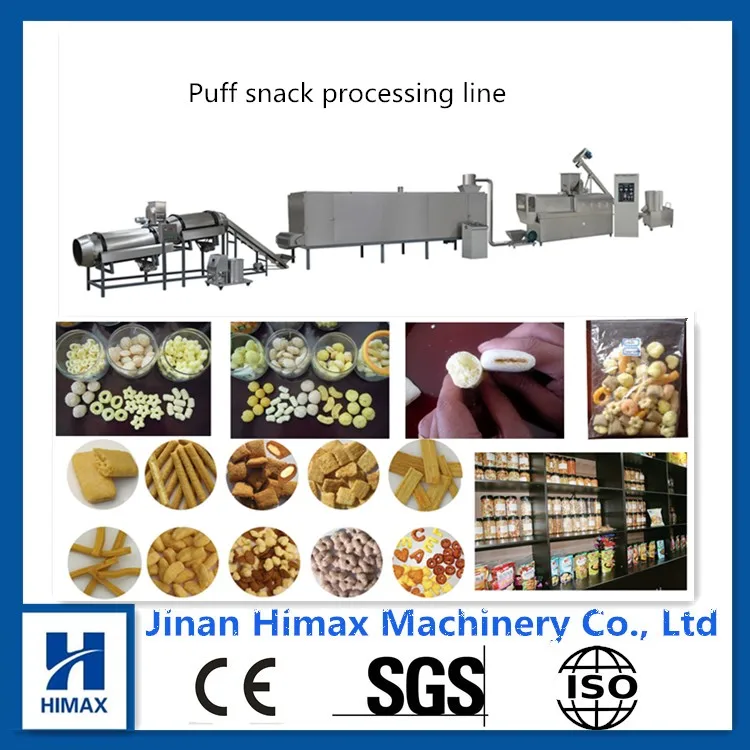
Homogenization - fine grinding of the pulp to a particle size of 10-30 microns. For this, when in the production of puree products, various types of homogenizers are used - plunger, rotary-pulsation, ultrasonic, etc. Homogenized products are well absorbed by the body of the child. So, in canned food for fruit and berry and vegetable base thanks to homogenization in juices with pulp is created homogeneous consistency of the product, its delamination is prevented. new the method is homogenization using liquid carbon dioxide. At this raw material is first saturated with C0 2 under pressure, then along the way movement of raw materials, pressure decreases, CO 2 boils, particles of raw materials crushed to a size of 50-60 microns. The method was developed by VNIIKOP.
At in the production of canned food meat-based blanched meat pre-cut on a microcutter to a particle size of 0.15-0.20 m / km, which allows you to get a homogeneous finely ground mass, saturated air.
Deaeration - air removal from the product - carried out at different stages of the technological cycle in order to prevent oxidation of labile components by atmospheric oxygen. Yes, during production canned food for fruit and berry and vegetable base product is heated and suck out the air, thereby creating a vacuum for 10-20 minutes. For this continuous deaerators are used. In such devices, the juice is continuous flow is passed through a chamber in which a deep vacuum is maintained. Juice is fed into the chamber in a thin layer or sprayed, due to which it sharply its surface increases, which contributes to the removal of air.
At production of canned food for meat base deaeration is carried out by spraying into vacuum chamber when heated to 80°C for 30-40 s. Wherein the main part of microorganisms is destroyed, which further facilitates product sterilization.
At in the production of canned fish the resulting mass is deaerated in a vacuum dispenser in the same way as in the production of canned meat, then heated to 80 ° C and immediately tightly packed in aluminum cans cues in lacquered tin cans with a capacity of up to 200 g. Filled cans are sealed under vacuum and transferred to sterilization.
Filled cans are sealed under vacuum and transferred to sterilization.
B depending on the type of canned food for baby food, the following methods are used thermal preservation: sterilization in a hermetically sealed container, pasteurization, hot filling and aseptic preservation.
Sterilization — heat treatment of the product at temperatures above 100°C. As a result, the development of RAPs is ensured, meeting the requirements of industrial sterility. Industrial sterile canned food is considered, in which there are no causative agents of sticking, pathogenic and toxic forms of bacteria, as well as other microorganisms that can develop under normal storage conditions and cause spoilage of canned food or form hazardous to health products of their vital activity.
Sterilization in a hermetically sealed container is used in the production of liquid and puree semi-finished products packed in large containers. So, sterilization of canned food on meat basis is carried out at t = 120-125 ° C in horizontal autoclaves of various types. At the same time, it is important to follow the rules sterilization - temperature and duration of treatment. Between them there is inversely proportional relationship: with increasing temperature, the required "death" time is reduced, but the loss of valuable nutrients increases substances.
At the same time, it is important to follow the rules sterilization - temperature and duration of treatment. Between them there is inversely proportional relationship: with increasing temperature, the required "death" time is reduced, but the loss of valuable nutrients increases substances.
Pasteurization - heat treatment of the product at temperatures below 100°C. Pasteurizers are used to process canned food. of various types, giving a temperature of 90-95 ° C, and more than strict requirements in terms of industrial sterility.
At industrial sterilization and pasteurization exercise systematic control for the presence of residual spore-forming mesophilic aerobic microflora. Before sterilization, the contamination should not exceed 2-102 in 1 g. Spore anaerobic microorganisms should not be detected in 0.5 g of the product. In already sterile product, the number of thermophilic microorganisms should be no more than 3 per 1 g of the product.
Hot filling (product temperature 97-98°С) typical only for canned food on fruit and berry and vegetable basis. It is carried out in continuously operating heat exchangers with automatic temperature regulation. With this method, to a lesser extent vitamins and other nutrients are destroyed. At this temperature, the product packaged in a hot container and immediately corked. In this way, juices are packed in jars with a capacity of more than 2 dm 3 , and semi-finished puree - 10 dm 3 .
It is carried out in continuously operating heat exchangers with automatic temperature regulation. With this method, to a lesser extent vitamins and other nutrients are destroyed. At this temperature, the product packaged in a hot container and immediately corked. In this way, juices are packed in jars with a capacity of more than 2 dm 3 , and semi-finished puree - 10 dm 3 .
Aseptic canning - sterilization product by rapid heat treatment followed by cooling, it packing in sterile containers of various capacities under sterile conditions and storage in a hermetically sealed container, excluding the possibility of contact from outside the microorganisms. Aseptic preservation is used in the preparation puree and liquid semi-finished products used for the manufacture of canned food for baby food.
K other methods of heat treatment of raw materials include blanching, frying, boiling.
Roasting in the production of canned food for RAP, as a rule, they are replaced by boiling chopped raw materials, such as zucchini, with subsequent boiling in a vacuum apparatus.





